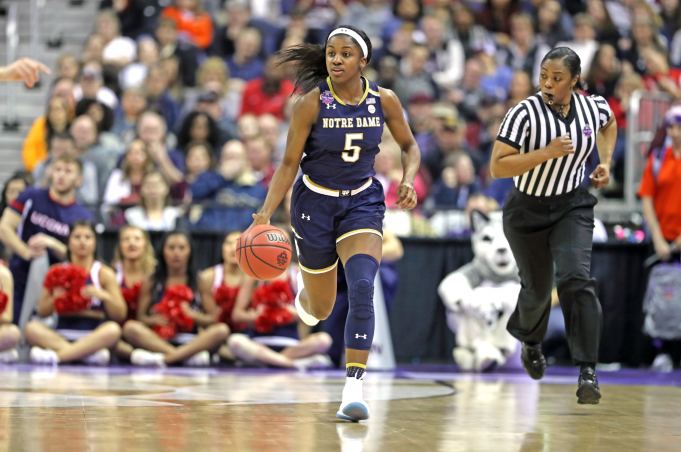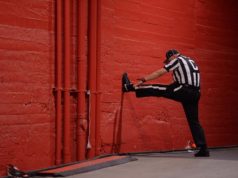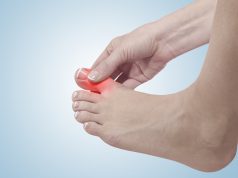Recently, we asked a handful of top NCAA officials from both the men’s and women’s game to share their fitness routines as they prepared for a new season on the hardwood. Our six experts have officiated a combined 152 seasons of NCAA Division I basketball and all are regulars in their respective NCAA tournaments.
It’s safe to say they know what it takes to reach the highest level of college basketball officiating, what it takes to stay there and what they need to do each offseason, specifically in the weeks and months leading up to tipoff to get themselves mentally and physically prepared for the challenges that await.
You will notice some common themes in their responses. That’s a pretty good indication that what they are doing works not only for them, but is good advice across the board.
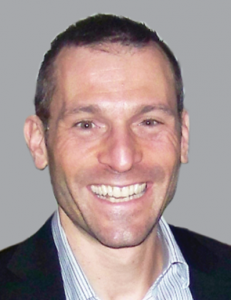 Joe Vaszily
Joe Vaszily
NCAA women’s basketball official, 21st season
When I tell people that I am a basketball official, the first question I am often asked is, “What do you do in the offseason?” My response: Student-athletes will always be in the 18- to 22-year-old range and each season I get a year older. I usually get a laugh, but it is true.
Our student-athletes continue to get stronger, faster and more athletic each season. We as referees must be diligent in our in-season and offseason conditioning to be ready for the start of each season.
After the Final Four, I tend to give myself about 3-4 weeks with limited to no cardio. My legs need time to recover from the long season. In addition, rest is important and I try to get 7-8 hours of sleep most nights. I maintain my physical conditioning by lifting weights 5-6 days a week.
I will begin my cardio training in May using the elliptical four days a week. I have two different workouts I use that both involve intervals and last about 20-25 minutes. After each workout, I also spend 10-15 minutes post-cardio workout rigorously stretching my leg muscles. I also receive two-hour massages about once a month.
Finally, I maintain a pretty healthy eating schedule, taking in a lot of green vegetables and lean proteins while drinking between 150-200 ounces of water each day. Water is an essential element to our muscles staying loose and healthy and it is an important part of my training each day. Putting good fuel in the body allows the body to perform at a higher level.
Experts often say that habits are formed after 21 days. During the spring/summer months, I tend to get my lifting workout completed in the morning and then go back for cardio in the afternoon. I like breaking it up and it works for me. Choose whatever works for you.
I encourage everyone to drink lots of water daily, stay loose and fit and get lots of stretching in post your workout. Nov. 5 will be here before we know it.
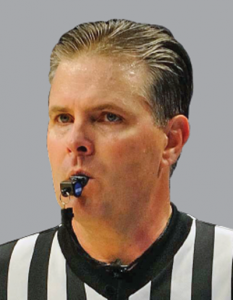 Joe Lindsay
Joe Lindsay
NCAA men’s basketball official, 25th season
Preparation for the upcoming season has a few different moving parts. There is the obvious physical part, not that I’m a top physical specimen myself. However, I’ve come to the realization that college referees can no longer “get into shape” a few months/weeks before the start of the season. The demands of the game have evolved refereeing into a constant “stay in shape” vocation.
My current strategy for weight management utilizes technology by using my Apple Watch to track various movement and exercise goals. Medical professionals say weight is caused by genetics, lifestyle factors and the interplay between them. We need to know what we can control and make the necessary changes to those lifestyle factors. I can’t eat those wings and pizza late at night like I could in my 30s. I recommend you find an upbeat music mix on Spotify along with some good earbuds and go for a run, walk your dog or get in a quick workout to meet those goals every day!
Physical fitness gets us part way there. The mental part is the unspoken factor we all need to get straight before the season begins. NCAA meetings, scheduling, rulebooks, rule tests and travel all start to increase our stress levels. Conferences are moving actual conference games into November, evaluators are watching “exhibition games” and preseason tournaments are loading up with “marquee games.” There are NO more easy games!
To mentally prepare for the season, I get into the rule and casebooks, draft up a pregame sheet and seek input from my peers, plan travel to get optimal rest and call my partners in advance to make that important connection before you take that first step onto the court.
Study, rest and connect.
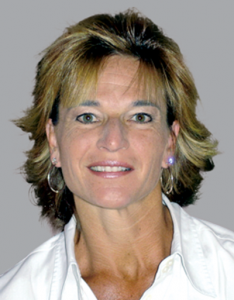 Dee Kantner
Dee Kantner
NCAA women’s basketball official, 36th season
So, when Referee sent me an email asking if I’d share my preseason workout with all, I thought to myself, “This is going to be a very short answer. I don’t have one.”
You see, I am probably clinically obsessive-compulsive when it comes to working out. I started being really serious about lifting and cardio workouts when I was 17 years old, way before it was de rigueur for girls and women to do so. I can honestly say I have not missed many days of workout since then. I’d like to say that’s only about 20 years, but my nose would grow exponentially if I wrote that.
I do some type of cardio and lift for one body part every day. My cardio in the offseason is cycling or using the elliptical. I found running too stressful on my joints as I got older and save my knees for the season now. Only lifting one body part per day allows me to lift every day and also gives the muscle groups ample time to recover.
Naturally, being fit and in good cardio condition can only help to elevate your presence on the court. However, I advocate for all, whether officiating is avocational or vocational, to incorporate a wellness and fitness program into your everyday lives.
As the season looms ever closer when October arrives, I do hit the local track and do some sprint work to engage those fast-twitch muscle fibers and work on getting the speed back. I sprint 50 meters, walk 50 meters. I do about 10 sets of this run-walk for a few weeks before the scrimmages start.
I also volunteer to work any local scrimmage that might be in the offering. One thing I have found throughout my career, it really doesn’t matter how much training you do, nothing truly simulates reffing a basketball game. I can’t replicate the slamming of the quads to stop and change direction because someone kinetically intercepted a pass and is going the other direction. No matter how much I train, I definitely expect my quads to be burning the first few weeks of the season.
I wish all good health and an injury-free season. Being in good condition year-round will help prevent those early season injuries and also sustain you in February when the fatigue really starts to hit. Cheers, and see you in the gym. Check out our Dee Kanter feature.
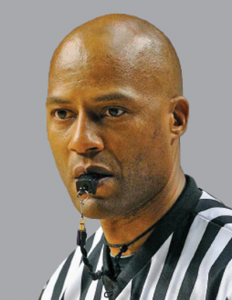 Bert Smith
Bert Smith
NCAA men’s basketball official, 27th season
My fitness is important to me. Since I’m involved in an athletic contest I want to be able to participate to the full, and working out, proper nutrition and recovery allow me to be able to keep up with the players and game. I’m committed to it year round.
Exercise is a 12-month commitment where once you create good habits it becomes part of who you are. During the season I keep a program of daily exercise that keeps me fresh and allows me to perform each night. I look at it as two-a-days as I work out early and then get to run an average of three-and-a-half miles per game. My program consists of various exercises through Beachbody on Demand, which allows me the flexibility to use the gym or my hotel room.
Nutrition is the key to maintaining a healthy lifestyle. With the travel schedule it’s imperative to make healthy choices. I strive to have Shakeology for breakfast, lean proteins and vegetables for lunch and dinner and keep the sugar to a minimum as that helps with keeping inflammation down.
Taking care of our bodies requires getting as much rest as we can; this allows us to recover and perform each night we work. I take the first flight of the morning, get to the city, get some exercise, grab a bite and get off my feet to allow my body to rest. Recovery is critical after each game, so stretching after the game, icing and wearing recovery items to reduce soreness is key. You can’t take rest and recovery for granted.
Each season always brings new challenges, so you have to ensure you’re getting your body ready for basketball season. My year-round fitness is different than basketball activities, but it allows the transition to be easier. There is no simulating a basketball game during training, but you can try to get close. I do interval training in 20-minute segments to get used to the time of a basketball half, which is comprised of sprints and shorter bursts. This allows my legs to get used to the stopping and starting of the game. Also, I work five to six scrimmages, which allows me to put my hard work to use and gets me game ready so I can hit the court running.
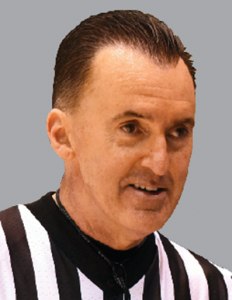 Roger Ayers
Roger Ayers
NCAA men’s basketball official, 24th season
As officials, we get older each new season, yet the players always remain the same age. In order to keep up, I have had to change my lifestyle. I maintain this lifestyle year round because it enhances my physical and mental well-being. Proper nutrition, both physical and mental exercises, proper rest and quality family time are all vitally important to me to be able to be the best official I can be.
Working out is a very important aspect of my lifestyle. I work out year round, not just a few weeks before the new season starts. I go to the gym daily and do a variety of workouts including spin classes, elliptical, treadmill, weightlifting and yoga. I also spend a tremendous amount of time on stretching and flexibility exercises.
Equally important, I try to maintain healthy eating habits year round. This includes eating a lot of fresh fruits and vegetables, whole grains and seafood. I have also minimized my alcohol consumption and now only drink an occasional glass of wine.
Lastly, one of the most important things I now do is I start each day with a morning walk. While walking I will listen to motivational and positive-thinking speakers. I am a firm believer that if we start each day with positive thoughts, we will have a positive day and a positive night on the court. The opposite is true as well. If we wake up with negative thoughts, we will have a negative day and a negative night on the court. Officials at all levels, from the rec ball officials in our communities all the way up to the professional ranks, are blessed to get do something we all enjoy. I try to embrace that thought year round!
After all the above is done, I read and study our rulebooks and casebooks and watch as much video as I can to prepare for the new season. And yes, I order up my season supply of hair gel! Now I am ready to roll. Let’s all have a great season! Check out our Roger Ayers feature.
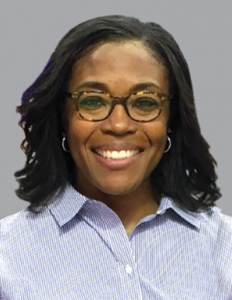 Lisa Jones
Lisa Jones
NCAA women’s basketball official, 19th season
My fitness and wellness regimen would be considered applicable to those 40 years and older. I say that because when I first started I didn’t need to do anything in particular as I had a job that required my fitness level to be elevated and therefore my fitness was maintained at a high level year-round. Now that I am over 40, and have experienced multiple knee surgeries and an Achilles’ rupture, it’s important that I consider working smarter rather than harder at this stage of my career.
As a result, in the offseason, I completely avoid anything related to picking my foot up and placing it back down onto a hard surface (as my doctor would say). For me, that means any sort of running or plyometric-type activities are out of the question. Instead, about three months from the season, I begin to add cardio into my week. I do low-impact elliptical machine workouts and use a recumbent bike for cardio. As the season nears, I do HIIT interval training utilizing non-pounding activity, for example, boxing for two minutes with a one-minute rest. Walking at an incline on the treadmill is also a great cardio enhancer to enhance fitness without the pounding. About one month out is when I begin to incorporate running to prepare for the season.
Year round I eat well and pretty clean, with the exception of my sweet tooth, which I do not manage well all of the time. A tip that helps me before and during the season is to use a fitness tracker. I have used a monitor for heart rate, steps, calories burned and recovery metrics for the past several years. I am very aware of how long it takes me to get ready to perform at my optimum level physically. Check out Lisa Jones’s Referee Voices talk.
What's Your Call? Leave a Comment:
Note: This article is archival in nature. Rules, interpretations, mechanics, philosophies and other information may or may not be correct for the current year.
This article is the copyright of ©Referee Enterprises, Inc., and may not be republished in whole or in part online, in print or in any capacity without expressed written permission from Referee. The article is made available for educational use by individuals.

